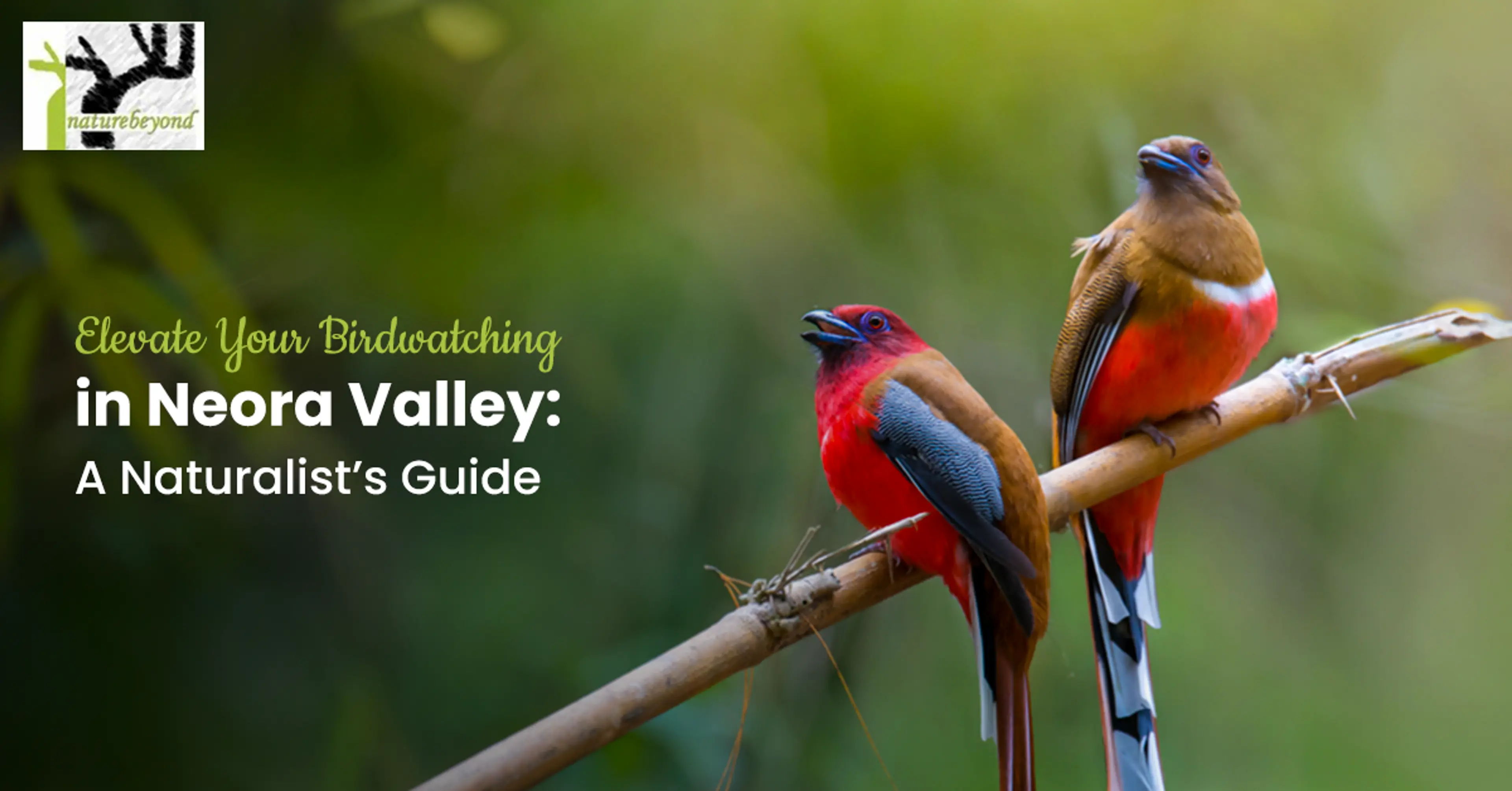
Where Silence Sings in the far reaches of the Eastern Himalayas, where the forest breathes mist and the trees stretch into clouds, there’s a place where silence is broken only by birdsong. This is Neora Valley. One of India’s last untouched wildernesses, Neora valley tour offers a rare intimacy with nature, especially for bird lovers.
You may come here to hear the call of a Satyr Tragopan deep in the rhododendrons or to see a glimpse of the Fire-tailed Myzornis. The silence, the light coming through old trees, and the peaceful moments when nature seems close enough to touch are what really stick with you, not just the birds.
Why Birders Love Neora Valley
A Mosaic of Altitudes
Neora spans altitudes from tropical lowlands to alpine ridges, creating layered habitats where different bird species thrive at different heights. Every turn in the trail feels like a new biome.
A Global Hotspot
This is not just a national park—it’s a sanctuary of global importance. Resident and migratory species converge here, including endemics found nowhere else on Earth. Conservationists and scientists alike regard it as a critical biodiversity reserve.
The Stars of the Canopy
From the elusive Satyr Tragopan to the jewel-toned Fire-tailed Myzornis, sightings in Neora are as rare as they are exciting. Although there is a lot of species diversity, identifying them takes expertise, perseverance, and frequently a little bit of luck.
When to Visit
-
October to March: Best for migratory species
-
April to June: Prime for resident birds in their breeding plumage
Cool mornings, layered light, and active forests make both seasons rewarding.
Getting There & Settling In
-
Nearest Airport: Bagdogra (about 100 km)
-
Railhead: New Jalpaiguri (NJP)
-
Stay: Homestays in Lava, Kolakham, or forest rest houses offer close access to trails and early starts
Travel tip: Roads can be rough, but the journey is part of the experience. Shared jeeps or private taxis are best.
Top Birding Hotspots
Lava
Easily accessible and birder-friendly. Look for the Rufous-vented Yuhina, Red-tailed Minla, and Himalayan Griffon.
Kolakham
Cooler, higher, quieter. Excellent for Satyr Tragopan and Blue-fronted Robin.
Rishyap & Charkhole
Great winter birding. Expect mixed flocks of warblers, sunbirds, and laughingthrushes.
Core Trails (with guide)
Zero Point and Alubari are the holy grails. The fire-tailed myzornis, often glimpsed here, is a near-mythical sighting.
Note: Many areas require forest permits and are best accessed with a certified local guide.
What to Look For
Iconic Birds
-
Satyr Tragopan – Often seen near bamboo thickets at dawn
-
Fire-tailed Myzornis - Bright green with scarlet tail, found near rhododendrons
-
Rufous-vented Yuhina – Common but charismatic in mixed flocks
Rare and Endemic
-
Grey-crowned Prinia
-
Red-faced Liocichla
-
Chestnut-headed Tesia
Migratory Highlights
-
Pallid Harrier
-
Eurasian Wigeon
-
Bar-headed Goose
Field tip: Movement is subtle here. Stop. Listen. Look twice. That rustle might be a tesia.
Essentials for the Trail
-
Binoculars: 8x42 recommended
-
Camera: 200mm or longer lens, tripod for stable shots
-
Apps: Merlin, BirdNet for call identification
-
Clothing: Earth tones, layers, waterproof outerwear
-
Other: Journal, power bank, reusable water bottle
How to Bird Better in Neora
Spotting
Learn the songs. Birds in Neora are often heard before they’re seen. Spend time in silence. Watch movement in the undergrowth and canopy.
Ethics
Stay on trails. Don’t use playback calls except with a research permit. Never feed or follow birds too closely. Your presence should feel like a whisper.
Documentation
Journaling or logging your sightings (eBird is great) not only helps you track species but contributes to citizen science.
Why Hire a Local Guide
-
Knows micro-habitats and seasonal hotspots
-
Access to remote, trail-less areas
-
Safer, especially in poor visibility or remote terrain
-
Supports conservation and local communities
Staying Safe, Staying Respectful
-
Wildlife: Keep distance, especially with mammals
-
Weather: Bring layers, check forecasts daily
-
Culture: Neora is home to warm communities—engage respectfully
-
Waste: Pack out everything. Leave no trace.
After the Trip: Stay Connected to the Wild
-
Upload your sightings to eBird
-
Share photos with fellow birders online
-
Support organizations working to protect Neora’s fragile ecosystem
-
Keep learning—every trip is just a chapter
Final Word: The Song of the Valley
Neora doesn’t announce itself. You earn its magic in slow steps and long silences. The most beautiful birds you’ll see here might be the ones you almost missed—the flutter behind a fern, the hush before a call.
So go with open eyes, quiet feet, and a little patience. The valley is waiting.